Roses, the reigning monarchs of Southern gardens, come in all colors, sizes, and shapes. From classic heirloom roses to new hybrids, small shrubs to climbing vines, there’s no shortage of beautiful roses to choose from, plant in your garden, and enjoy.
When selecting the right roses to plant in your garden, it’s important to take stock of light, water, and climate requirements. Make a good match, and your roses will thrive. When the plants are well suited to your garden, and vice versa, it’s a match made in floral heaven. They’ll bloom in their time and are sure to bring you joy all season long. Read on to learn about a few of our favorite types of roses for Southern gardens.
Climbing Roses
- Botanical Name: Rosa setigera
- Sun Exposure: Full sun
- Soil Type: Loamy, well-drained soil
- Soil pH: 6.0 – 6.5
There’s nothing that quite says fairytale like an arbor exuding gorgeous blooms, or a wall covered with fragrant florals. That is why we love climbing or rambling roses—they are dreamy, and make you feel like you’ve stumbled into a storybook. All you need is an arbor, a large wall, a fence, a trellis, or even a tree. These climbers will grow easily, but they must be trained and pruned beginning in their second or third spring, to keep them from becoming unruly. The «Lady Banks» variety is just one of the many types of climbing roses out there, but the «Don Juan» is another one of our favorites.
How To Grow And Care For Climbing Roses
Floribunda Roses

- Genus Name: Rosa
- Sun Exposure: Full sun
- Soil Type: Well-drained soil
- Soil pH: 6.0 – 6.5
Originally created by crossing hybrid tea roses with polyantha roses, floribundas produce big clusters of blooms in a variety of colors. These colorful florals are fairly low maintenance, resistant to disease, and will bloom non-stop throughout its entire season. One of our favorite varieties of the floribunda rose is the «Julia Child» rose—named after the greatly admired chef.
English Roses

- Genus Name: Rosa
- Sun Exposure: Full sun
- Soil Type: Well-drained soil
- Soil pH: 6.0 – 6.5
English roses, also known as David Austin roses (after the breeder who created them), combine the best of old and modern roses and have strong fragrances. Their lush double blooms come in so many colors, from more vibrant yellows and oranges to softer colors like pink and white. Water your roses frequently, or one to two times weekly to ensure proper care. Also, be sure to prune your roses regularly to promote growth—the best time to prune your roses is in late winter before new roses start to bloom
Grandiflora Roses

- Genus Name: Rosa
- Sun Exposure: Full sun
- Soil Type: Loamy, well-drained soil
- Soil pH: 6.0 – 7.0
Grand, romantic, and royal, the grandiflora rose was produced by crossing floribunda roses with hybrid tea roses. The «Queen Elizabeth» grandiflora rose variety, as pictured, was the original grandiflora rose, bred in 1954 by Dr. Walter Lammerts for Queen Elizabeth II. Grandiflora roses have large flowers, a little larger than the floribunda flower, that come in a wide variety of colors. Their taller-than-average stems make them perfect for borders, and in any rose garden fit for a queen.
Hybrid Tea Roses
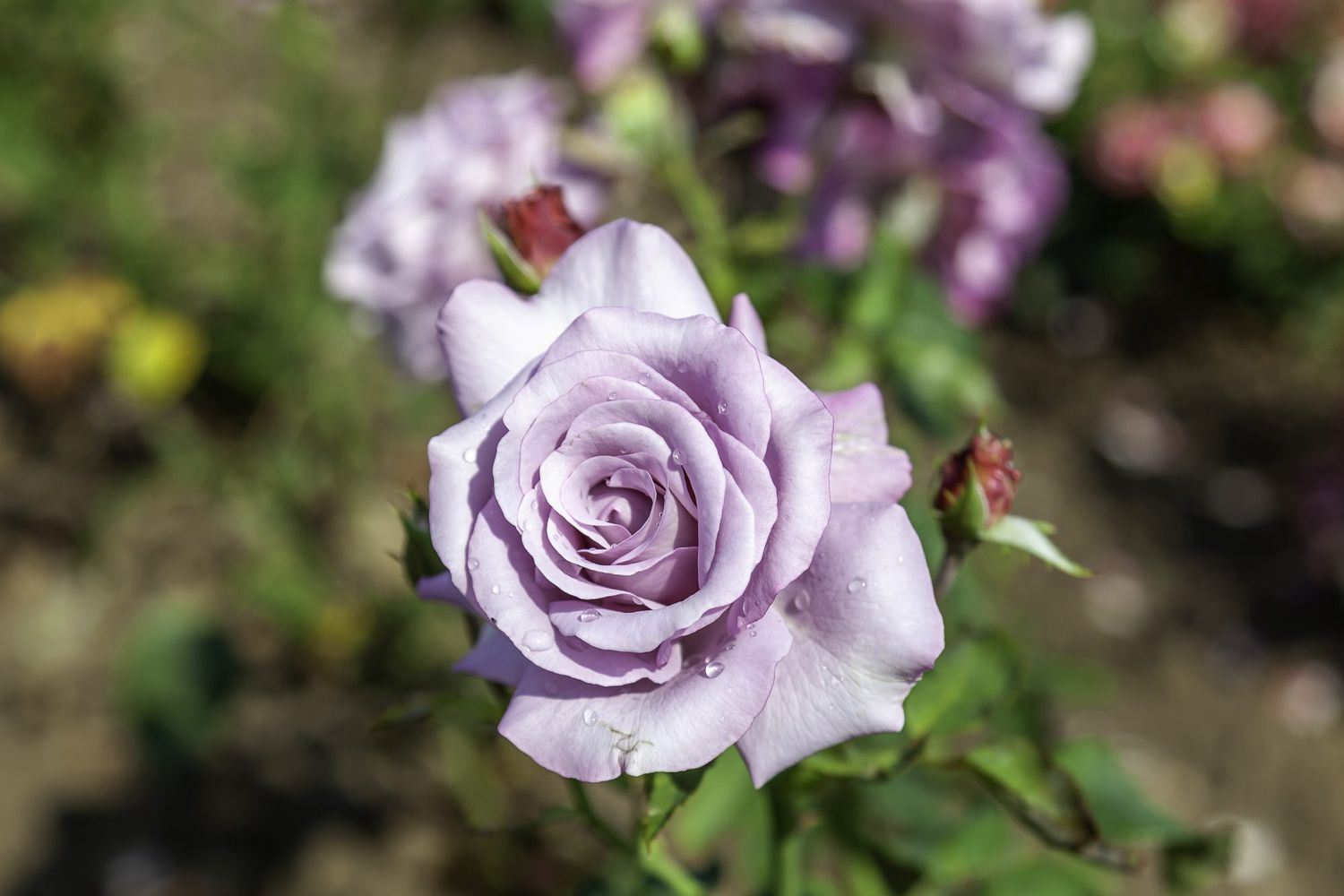
- Bontanical Name: Rosa x hybrida
- Sun Exposure: Full sun
- Soil Type: Loamy, well-drained soil
- Soil pH: 6.0 – 6.5
These very popular types of roses have the classic bud flower shape. They grow tall with a single rose at the end of each stem and include selections like «Double Delight» and «Mr. Lincoln.» It’s important to deadhead blooms that look tired for more new blooms to come in. The ideal time to plant this rose is in its dormant seasons, in either fall or spring, however, it can be planted year-round.
Double Delight Roses are the Two-Tone Blooms of Your Dreams
Miniature Roses

- Bontanical Name: Rosa chinensis var. minima
- Sun Exposure: Full sun
- Soil Type: Loamy, well-drained soil
- Soil pH: 6.0 – 7.0
Also known as a ground cover rose, these flowers are produced in mounds and grow low to the ground. These beautiful bloomers stay under about 2 feet tall, are thornless, have smaller blooms than standard roses, and are incredibly fragrant. Though they are smaller in size, they are incredibly winter-hardy. Whether you decide to plant your miniature roses in a container or in your flower bed, be sure to plant them somewhere sunny for the most abundant blooms.
Centifolia Roses

- Bontanical Name: Rosa centifolia
- Sun Exposure: Full sun
- Soil Type: Loamy, well-drained soil
- Soil pH: 6.0 – 6.5
Also known as «Cabbage Rose» and «Provence Rose», the centifolia rose—literally meaning «hundred-leaved» rose, has dense clusters of petals, and is extremely fragrant. They are known for their full, globular heads that droop a little from their long stems. They bloom in early summer, are winter-hardy, and are disease resistant.
Damask Roses

- Bontanical Name: Rosa damascena
- Sun Exposure: Full sun
- Soil Type: Loamy, well-drained soil
- Soil pH: 6.0 – 6.5
These roses, also known by the scientific name Rosa × damascene, are some of the oldest roses out there. They are shrub roses that can grow up to 7 feet in height. These delicate, romantic florals have lush white, pink, and red blooms and thorny stems.
Noisette Roses
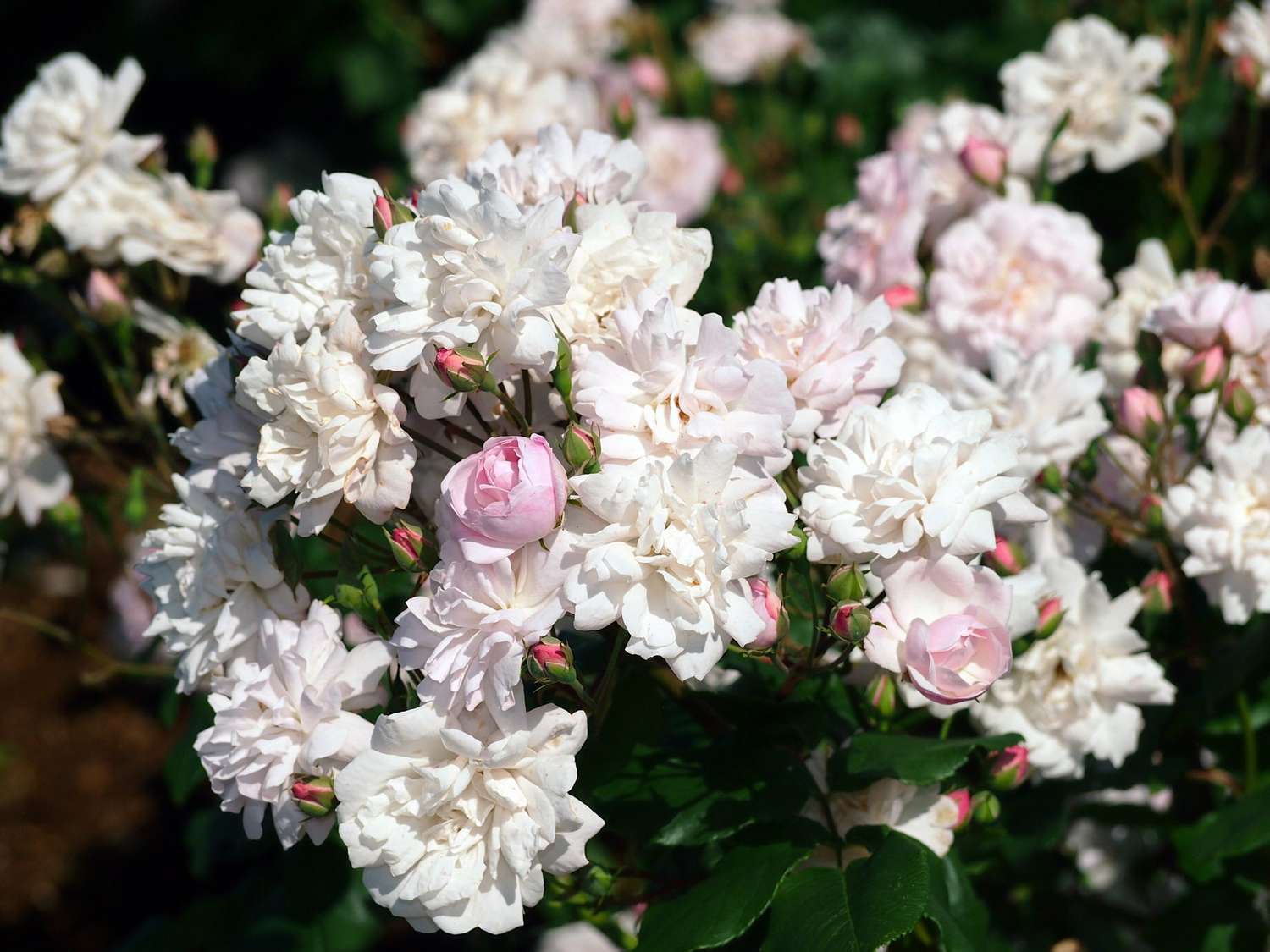
- Genus Name: Rosa
- Sun Exposure: Full sun
- Soil Type: Well-drained soil
- Soil pH: 6.0 – 6.5
These popular climbing roses were cultivated in Charleston, South Carolina in the early 1800s by its namesakes, Louis and Philippe Noisette. They can stand up to winter temperatures, and they can clamber up supports like trellises and walls. While they are disease resistant, they are not cold-hardy. They produce heavy blooms and tend to droop from their weight.
The Sweet Southern Noisette Rose
Polyantha Roses

- Botanical Name: Rosa multiflora polyantha
- Sun Exposure: Full sun
- Soil Type: Well-drained soil
- Soil pH: 6.0 – 6.5
These roses are compact and produce an abundance of blooms, making them great for containers. They’re also known as multiflora roses. The polyantha roses are a parent of floribunda roses. They are generally low-maintenance roses and continuously bloom in clusters throughout their season.
Bourbon Roses
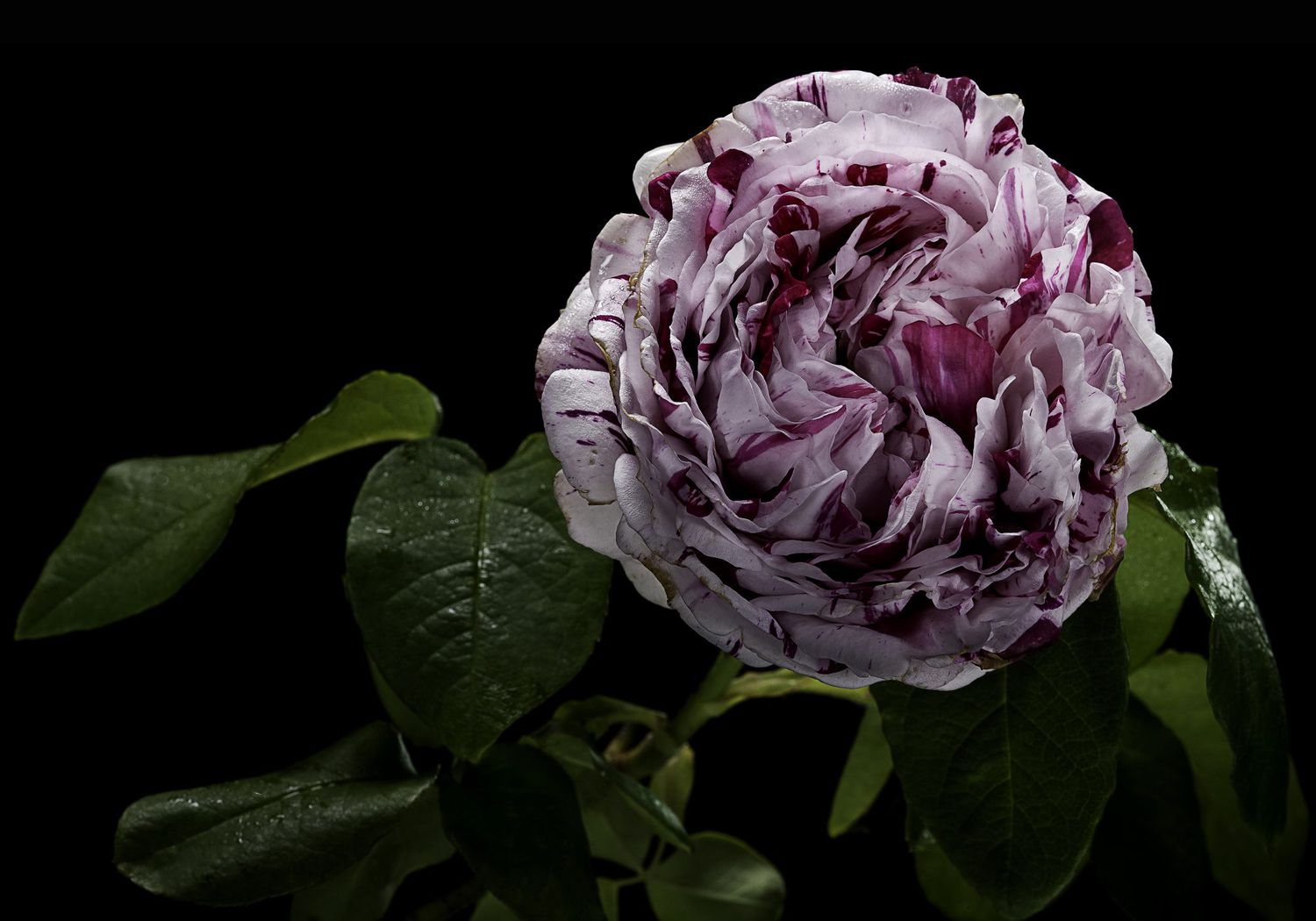
- Genus Name: Rosa
- Sun Exposure: Full sun
- Soil Type: Well-drained soil
- Soil pH: 6.0 – 6.5
These roses flower repeatedly during the year. They have classic, broad blooming shapes and strong floral fragrances. While you may think of the alcoholic drink when you hear this rose’s name, it actually got its name from where it originated on Bourbon Island (now Réunion Island), located in the Indian Ocean.
Gallica Rose

- Botanical Name: Rosa gallica
- Sun Exposure: Full sun
- Soil Type: Well-drained soil
- Soil pH: 6.0 – 6.5
Also known as the French Rose, the Gallica Rose was one of the earliest rose species cultivated in Europe. This rose grows from a shrub and has thorns. The «Charles De Mills» variety, as pictured, is one of our favorite types with its beautiful purple-red color, and full double-flowers.
Alba Roses

- Botanical Name: Rosa x alba
- Sun Exposure: Full sun
- Soil Type: Well-drained soil
- Soil pH: 6.0 – 6.5
Classic and elegant, Alba Roses are cold-hardy and very disease resistant. They have delicate white, blush, and pink petals and are fragrant. They are low-maintenance and extremely durable roses with roots that date back to the Middle Ages.
Drift Roses
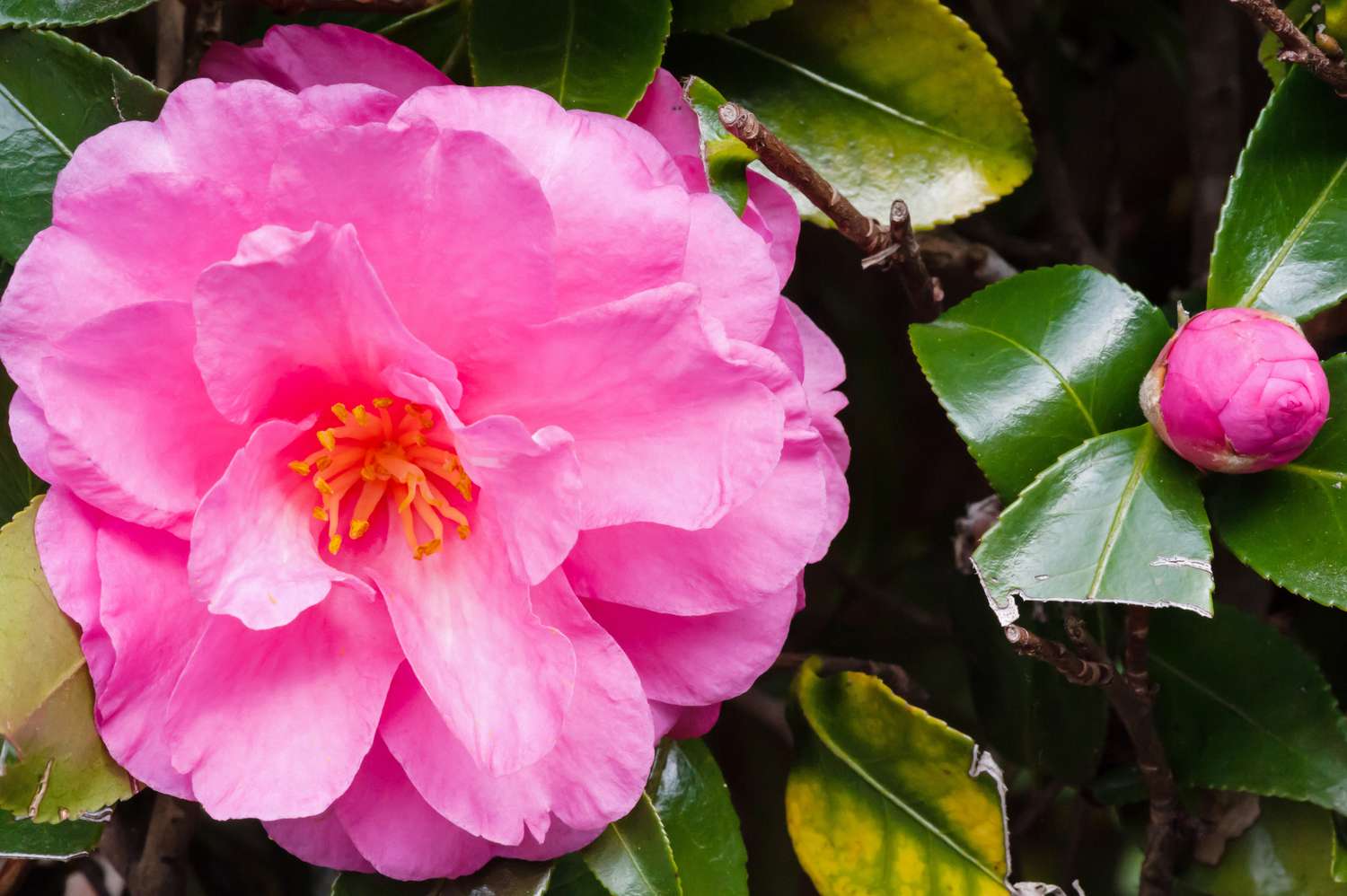
- Botanical Name: Rosa hybrid ‘Drift’
- Sun Exposure: Full sun
- Soil Type: Well-drained soil
- Soil pH: 6.0 – 6.5
If you’re looking for roses that require little attention, are resistant to disease, and will bloom continuously throughout their season, Drift roses are the ones for you. They are gorgeous, vibrant with color, and will brighten up any area you choose to plant them. With a height of up to 18 inches, they are perfect for ground cover.
How To Grow And Care For Drift Roses
Dog Rose
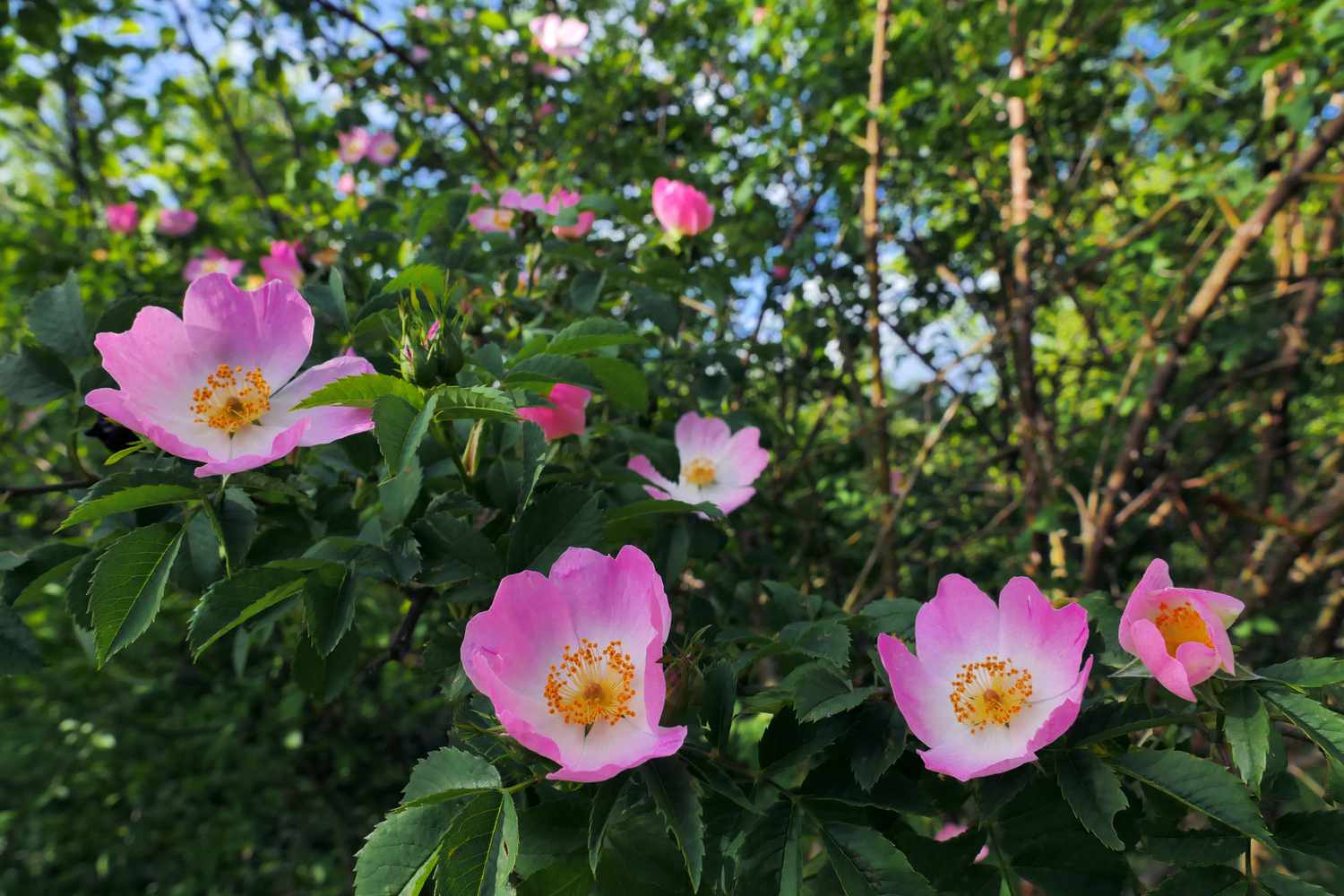
- Botanical Name: Rosa canina
- Sun Exposure: Full sun
- Soil Type: Well-drained soil
- Soil pH: 6.0 – 6.5
The deciduous Dog Rose is a type of wild rose that is classified as both a shrub and a climber. It grows quickly and aggressively, and because of this is considered an invasive species in some areas. Atop their long arching thorny stems sits striking pink and white flowers. After the blooms, bright red rose hips appear and remain for a few months.
Was this page helpful?
Thanks for your feedback!
Tell us why!